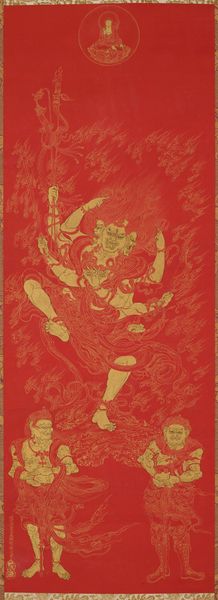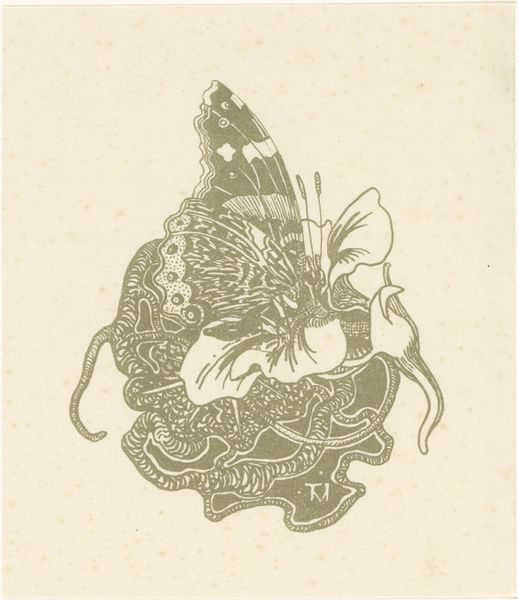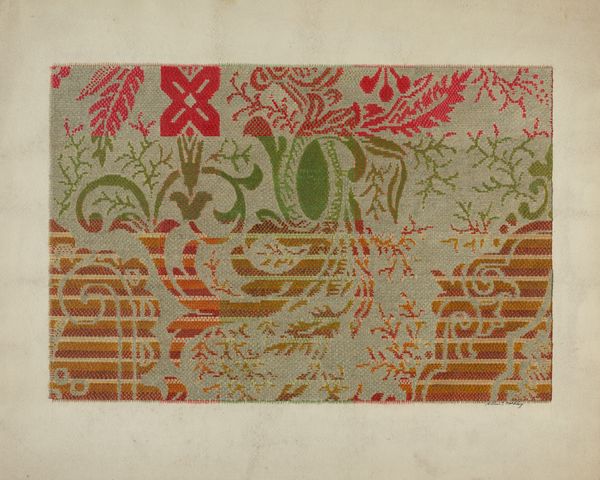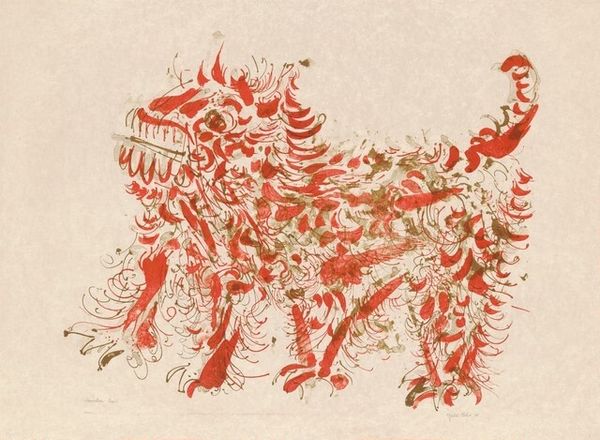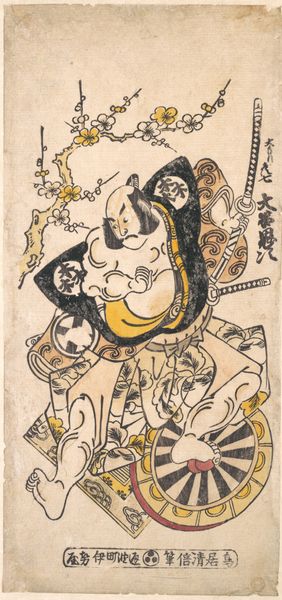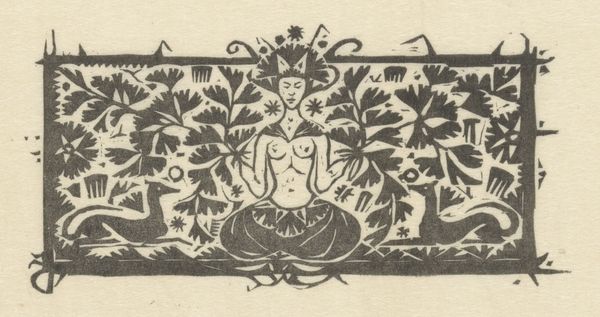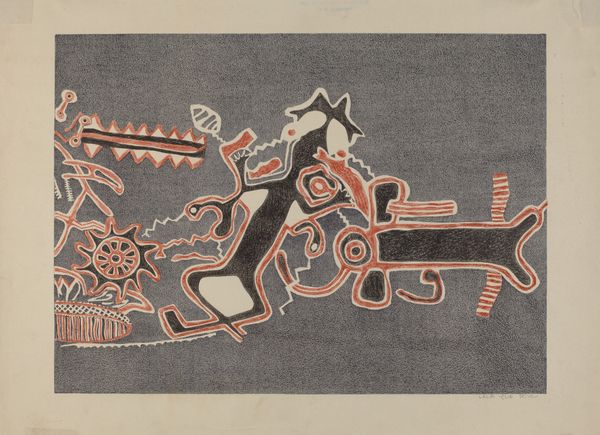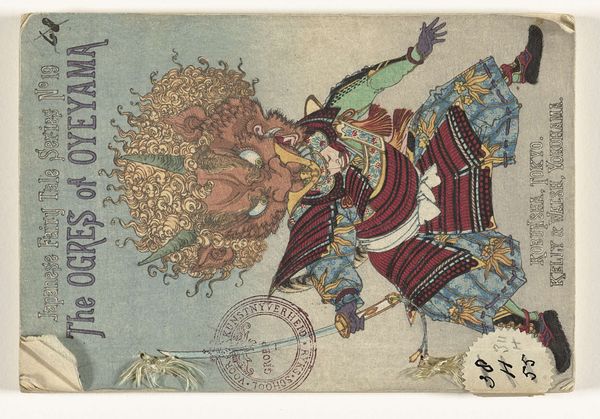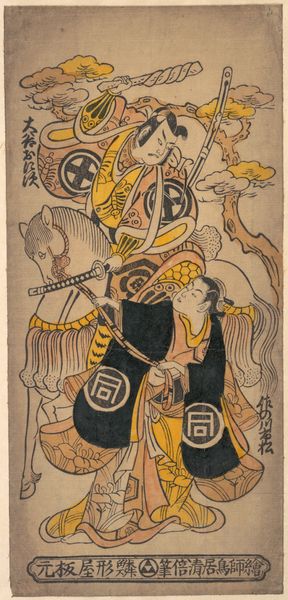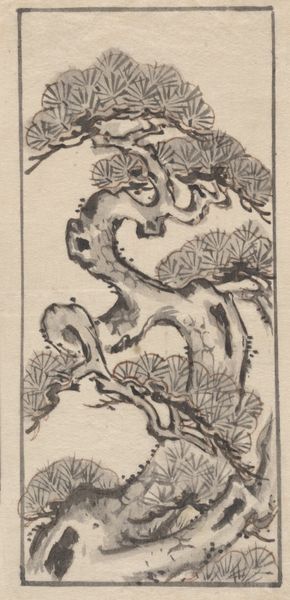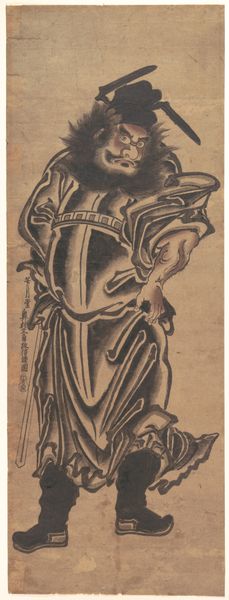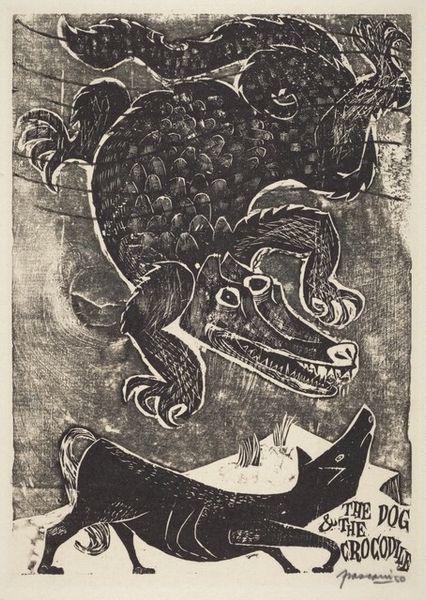
print, woodcut
# print
#
geometric
#
woodcut
#
abstraction
Copyright: National Gallery of Art: CC0 1.0
Curator: Initially, I'm drawn to the overall visual effect. The stark black lines carved against that warm orange background creates a fascinating textural interplay. Editor: And that immediacy hints at its woodcut process. We are looking at "After an Iran Sculpture" created by John Bernhardt in 1956. Given the title, I am led to believe Bernhardt likely found some interesting sculptures he then wanted to turn into print form using abstraction. I wonder about the specific labor involved in transferring the observed object into wood and then printing it. Curator: That title provides a point of departure. Though abstracted, there’s a distinct feeling of the monumental, even in this two-dimensional representation. Observe how the interplay of positive and negative space dictates the visual flow. Editor: It's about accessibility as well, right? Woodcuts have been a more accessible art form, reproducible and transportable, unlike the original sculpture that demanded significant material, place, and specialized labour. The choice of material—wood— itself suggests the history of this accessible and perhaps reproducible nature. Curator: Material properties influence form and reception, indeed. Wood's grain and density resist precision, thus influencing Bernhardt's mark-making; but consider also that a form such as this encourages viewers to project and complete forms, to question the stability of representation. The shapes hint at familiar forms but defy complete identification. Editor: Absolutely, and even the way the image will vary, each print differing in how the ink is applied and taken away adds another layer of individuality to these accessible pieces. What strikes you about Bernhardt’s approach to mark making? Curator: The dynamism of the lines. He moves from hatching to block-like shapes to the sweeping curves suggesting movement. His visual grammar keeps the viewer moving. Editor: For me, that constant shifting speaks to the constant processes and pressures on artistic traditions from "high art" to reproducible image that a print like this raises, the tension between concept and the hands involved in this creative expression. It really prompts thoughts around both the transformation and preservation of imagery. Curator: A pertinent reflection, highlighting how visual culture circulates, changes, and ultimately preserves or reinterprets legacies. Editor: Definitely a journey in method as much as visual appreciation for that source sculpture.
Comments
No comments
Be the first to comment and join the conversation on the ultimate creative platform.
